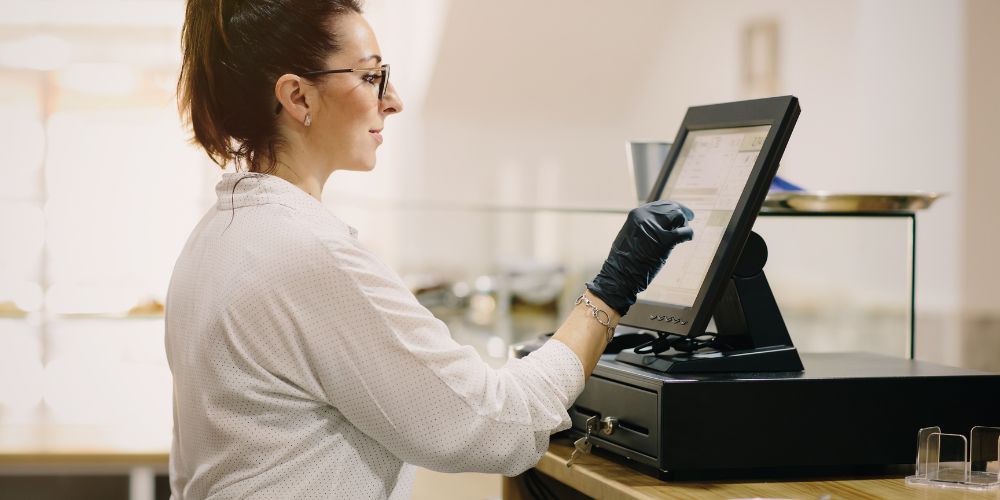In today’s restaurant world, technology is more important than ever. Restaurants are no longer just about good food—they also need smooth operations, fast service, and happy customers. One of the key tools that help restaurants run efficiently is the point-of-sale (POS) system. A good POS system can manage orders, handle payments, keep track of inventory, and even provide important reports to help owners make smarter decisions.
Choosing the right POS system can make a big difference. The two popular options many restaurants consider are the Clover Flex and Clover Station. Both have their own strengths and are designed to meet different needs. Understanding how each system works and what it offers can help restaurant owners choose the best fit for their business.
Clover Flex: Mobility and Convenience
The Clover Flex is a small, all-in-one handheld device. Its main advantage is mobility. Staff can take orders at the table, process payments immediately, and even print receipts without going to a separate register. This is especially helpful for cafes, small restaurants, and food trucks where speed and flexibility are important. The ability to move around with the device allows staff to provide more personalized service and reduces waiting time for customers.
Using the Clover Flex is also straightforward. Its touchscreen is easy to use, and most staff can learn it quickly. It has built-in features for tracking inventory, managing employees, and generating sales reports. For smaller restaurants or those with limited space, its compact size is a big plus. It can handle everything needed for daily operations from one single device.
Clover Station: Power and Stability
The Clover Station is a larger, stationary POS system. It comes in two versions, including one with a second screen for customers. The Station is designed for restaurants that handle many orders or have a bigger staff. Its larger screen and stronger hardware make it ideal for full-service restaurants or busy fast-casual spots.
Unlike the mobile Flex, the Station stays in one place. It can connect to additional devices like printers, cash drawers, and scanners. This makes it easier to manage complex orders and keep the checkout area organized. Restaurants with bigger menus or higher volume will benefit from the Station’s capacity to handle multiple tasks at once.
Software and Apps
Both Clover Flex and Station can use apps to extend their functionality. Restaurants can add features like online ordering, loyalty programs, or marketing tools. However, the Clover Station, with its larger screen and stronger hardware, may handle multiple apps at the same time more efficiently. The Flex can still run these apps, but using multiple features at once can be easier on the Station.
Payment Processing
Both systems accept many payment types, including chip cards, NFC payments like Apple Pay, and traditional magnetic stripe cards. The Flex allows payments at the table, which speeds up service. The Station processes payments at a central location, which works well in restaurants with a high volume of transactions. Each has its own advantage depending on how the restaurant operates.
Cost and Budget
The Flex usually costs less upfront, which makes it attractive to small businesses or new restaurants. Its all-in-one design can reduce the need for extra equipment. The Station is more expensive, especially if you add a second screen or other peripherals. For larger restaurants, the higher cost can be worth it because it improves efficiency, reduces mistakes, and supports multiple staff working together.
Which System Fits Your Restaurant?
The choice depends on your restaurant’s size, style, and how you serve customers. Small cafes, food trucks, and casual dining spots often benefit from the Clover Flex. Its mobility and ease of use make it perfect for personalized service and fast operations. On the other hand, full-service restaurants, high-volume eateries, and larger establishments often find the Clover Station a better fit. Its power, multi-user capability, and ability to handle complex orders make it ideal for busy environments.
If you want to learn more about how these systems work for different restaurants, you can check out this guide on clover for restaurants.
Customer Experience
The POS system can affect how customers see your restaurant. The Flex allows staff to interact directly with diners, which can create a friendly and efficient experience. The Station provides a professional and organized checkout area, which is important in fast-casual or high-volume restaurants. Choosing the right system helps ensure smooth service and satisfied customers.
Inventory and Reporting
Both systems help track sales, manage inventory, and monitor staff performance. The Station’s larger screen and stronger hardware make it easier to handle multiple tasks at once, which is useful for bigger restaurants. The Flex handles these features well too, but is better suited to smaller operations. Both systems offer cloud-based reporting, so owners can check sales and inventory from anywhere.
Conclusion
Both Clover Flex and Clover Station are strong options for restaurants, but each is designed for different needs. The Flex is perfect for smaller restaurants or businesses that value mobility and personalized service. The Station is better for larger, busier restaurants that need a powerful, multi-user system to manage complex operations. By thinking about your restaurant’s size, workflow, and customer experience, you can choose the POS system that will help your business run smoothly and efficiently.
https://kinkedpress.com/
